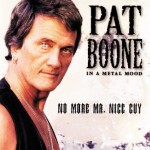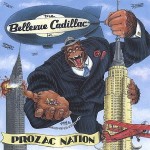Back in the Seventies, Canadian Country singer Anne Murray recorded an Allen/Sager song called “Everything Old is New Again”.
It was a celebration of retro style. But more than that, it was a call to embrace the nostalgia of the past as a comfortable harbor.
For most listeners, the “white suit, top hat, and tails” conjur up a past well before our time. Nonetheless, we knew we could all cast away our troubles and immerse ourselves in the tried, true, and comforting days of yore.
To varying degrees, each decade sees a revival of past favorites.
I Haven’t Been There for the Longest Time

The 1970s nostalgia vehicles American Graffiti and Happy Days set the stage for more revivals of 1950s styles.
Back to the Future took up the cinematic torch in 1985, with mid-Fifties hits such as the Chordette’s “Mister Sandman” in its soundtrack.
A few years before Back to the Future, the Stray Cats strutted onto the scene with retro rockabilly.
Several artists contributed to the 1980s wave of Fifties and Sixties nostalgia.
George Harrison – himself a 1960s institution – released a remake of James Ray’s 1962 recording, “Got My Mind Set on You”. Billy Joel had a duo of neo-retro hits: “Uptown Girl” and “For the Longest Time.”
Gaga for Classic Jazz

Older artists can benefit from these retro crazes. Tony Bennett made a very successful career comeback when his son thought to expose him to a new audience during the early swing revival.
Nattily dressed in well-tailored suits, and singing from The American Songbook, Bennett made no effort to conform to the trends of the times. Instead, he set out to again be a trend-setter. (He probably primed some of the audience for Harry Connick, Jr., and Michael Bublé.)
A quarter of a century later, the still-vibrant Mr. Bennett is releasing new albums, and touring with Lady Gaga.

Bennett’s career move worked better than Pat Boone’s attempted buffoonery.
1997’s release of In a Metal Mood: No More Mr. Nice Guy got Boone booted (temporarily) off of Trinity Broadcasting Network’s Gospel America.
A listing of the album personnel shows that many of the original artists played along with Pat’s joke – combining Heavy Metal with Easy Listening. Even Ozzy used a cover of Pat Boone’s cover of “Crazy Train” for the theme song of his MTV reality show, The Osbournes.
Give That Rhythm Everything You Got
A Swing revival started in the final decade of the twentieth century. Groups such as the Cherry Poppin’ Daddies, Bellevue Cadillac, the Brian Setzer Orchestra, and Squirrel Nut Zippers donned the Zoot suits of sixty years before.
These groups brought their own twist to the music of the 1930s, creating the neo-Swing movement.
Admittedly, some of the lyrics were bawdier than in the original, Depression-era music. But the upright bass and the horn section trumpeted the swinging rhythms of decades before.
To Do “Then” Now*

There is a very practical reason why these musical revivals regularly take place: Often, the artists grew up in a period of time heavily influenced by the retro style they’re emulating.
Billy Joel, born in 1949, was a young boy going into his teens when Doo Wop was at the height of its popularity. Even though his own music helped define the sound of the 1980s, his internal soundtrack was drawn from the days of his own youth.
Brian Setzer and his Stray Cats bandmates would have heard rockabilly growing up, and their later homage to the style makes sense.

Less easily understandable (although no less enjoyable) is the 1990s Swing revival.
Most of the neo-Swing bandleaders were born about thirty years after Swing was King. All it would take was a few “retrophiles” to start the fire, but what made it spread?
Everything Old is New Again
I believe it is the passage of time itself which allows us to appreciate the gifts of the past. The music from our grandparents’ day can sound brand new, because it is so far removed from our everyday experience.
For many musicians, the music from their childhoods will always have the sweet kiss of nostalgia upon it. And that nostalgia may cause them to add it to their own musical mix, making it part of the present musical landscape.
One of my favorite professors once talked about the “telescoping of history” – the way in which artifacts from the past, such as ideas, books, and songs, continue to exist and become entwined with newer constructs over the course of time.
This subtle, usually incidental entanglement sometimes produces unexpected conceptual hybrids. Artists, writers, and musicians often deliberately take from our common cultural heritage to consciously build the future on the foundation of the past.
While sounding innovative to younger ears, the music from decades ago is well-established. New listeners to rockabilly or swing may be very pleased to know that there is a treasure-trove of trend-setting music awaiting them, as fresh as when it was new.
*I believe Mark Shubb of the Folksmen said it best: “To do then now would be retro. To do then then was very now-tro, if you will.”